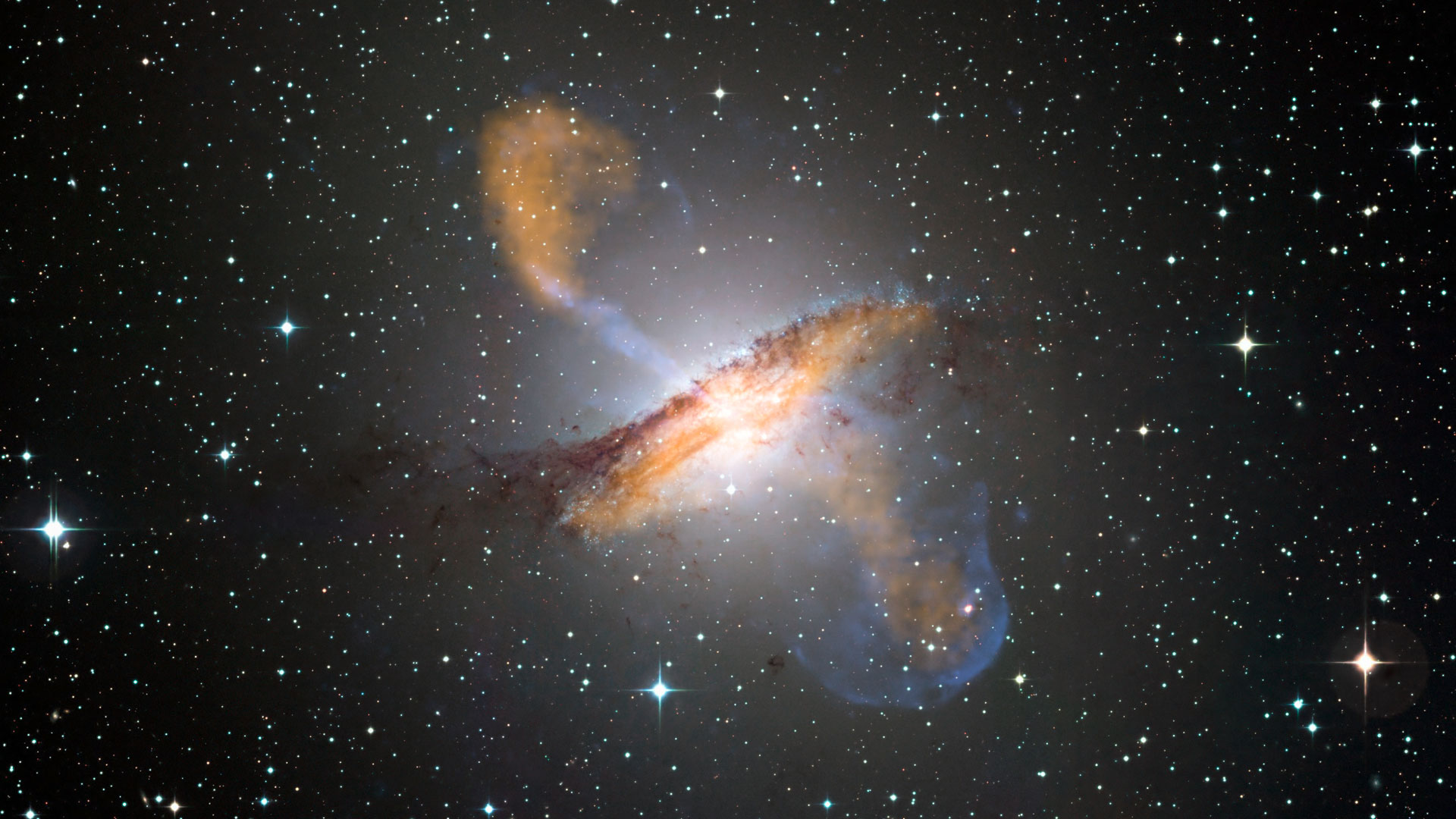
The astronomers pinpoint the location of the central supermassive black hole and reveal how a gigantic jet is being born.
This work, led by Michael Janssen from the Max Planck Institute for Radio Astronomy in Bonn and Radboud University Nijmegen is published in Nature Astronomy today (July 19th, 2021).
At radio wavelengths, Centaurus A emerges as one of the largest and brightest objects in the night sky.After it was identified as one of the first known extragalactic radio sources in 1949, Centaurus A has been studied extensively across the entire electromagnetic spectrum by a variety of radio, infrared, optical, X-ray, and gamma-ray observatories.
At the center of Centaurus A lies a black hole with the mass of 55 million suns, which is right between the mass scales of the Messier 87 black hole (six and a half billion suns) and the one in the center of our own galaxy (about four million suns).
Credit: Radboud University; CSIRO/ATNF/I.Feain et al., R.Morganti et al., N.Junkes et al.; ESO/WFI; MPIfR/ESO/APEX/A.
We see up close and personally how a monstrously gigantic jet launched by a supermassive black hole is being born,” says astronomer Michael Janssen.
Compared to all previous high-resolution observations, the jet launched in Centaurus A is imaged at a tenfold higher frequency and sixteen times sharper resolution.Supermassive black holes residing in the center of galaxies like Centaurus A are feeding off gas and dust that is attracted by their enormous gravitational pull.Highest resolution image of Centaurus A obtained with the Event Horizon Telescope on top of a color composite image of the entire galaxy.Credit: Radboud University; ESO/WFI; MPIfR/ESO/APEX/A.
The new image shows that the jet launched by Centaurus A is brighter at the edges compared to the center.It’s a striking feature that will help us better understand jets produced by black holes,” says Matthias Kadler, TANAMI leader and professor for astrophysics at the University of Würzburg in Germany.
With the new EHT observations of the Centaurus A jet, the likely location of the black hole has been identified at the launching point of the jet.Based on this location, the researchers predict that future observations at an even shorter wavelength and higher resolution would be able to photograph the central black hole of Centaurus A.
“These data are from the same observing campaign that delivered the famous image of the black hole in M87.The new results show that the EHT provides a treasure trove of data on the rich variety of black holes and there is still more to come,” says Heino Falcke, EHT board member and professor for Astrophysics at Radboud University.
To observe the Centaurus A galaxy with this unprecedentedly sharp resolution at a wavelength of 1.3 mm, the EHT collaboration used Very Long Baseline Interferometry (VLBI), the same technique with which the famous image of the black hole in M87 was made.The EHT consortium consists of 13 stakeholder institutes: the Academia Sinica Institute of Astronomy and Astrophysics, the University of Arizona, the University of Chicago, the East Asian Observatory, Goethe University Frankfurt, Institut de Radioastronomie Millimétrique (MPG/CNRS/IGN), Large Millimeter Telescope, Max Planck Institute for Radio Astronomy, MIT Haystack Observatory, National Astronomical Observatory of Japan, Perimeter Institute for Theoretical Physics, Radboud University and the Center for Astrophysics | Harvard & Smithsonian.